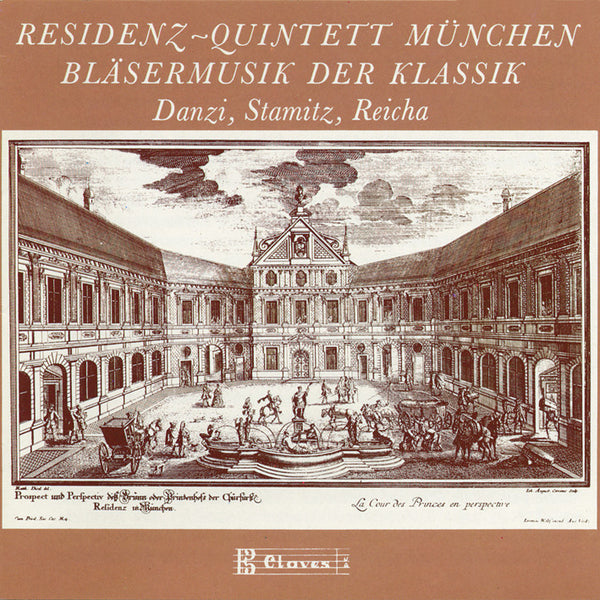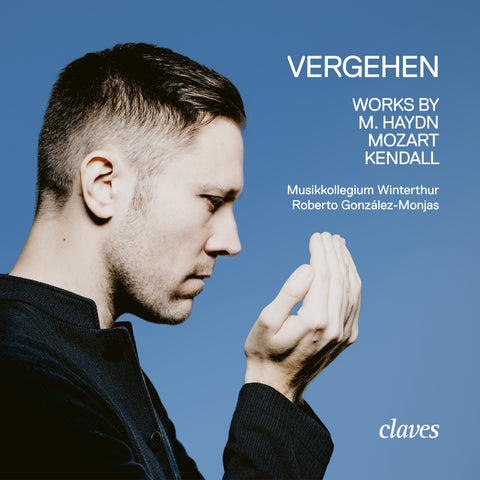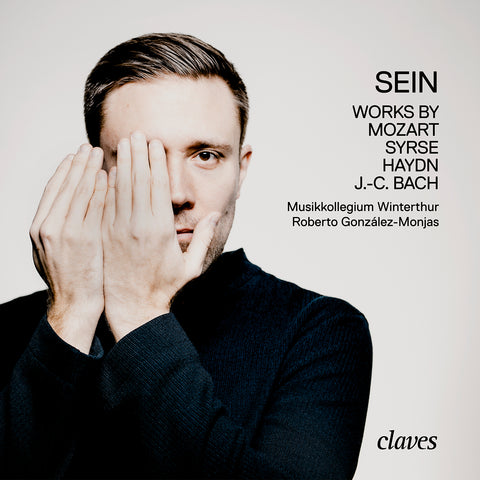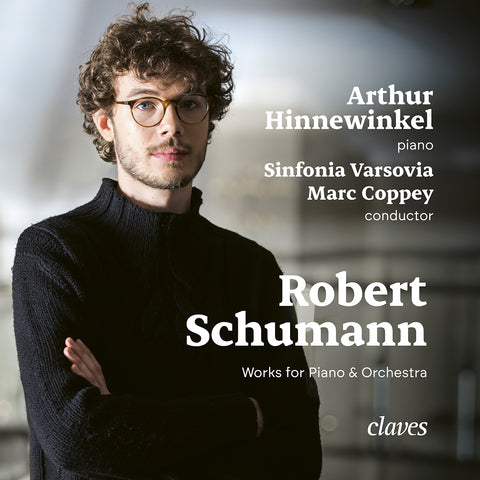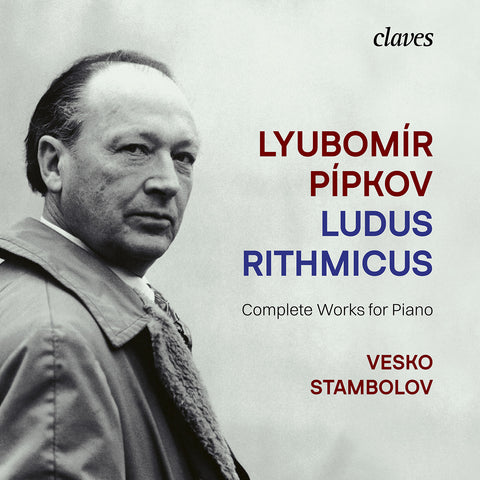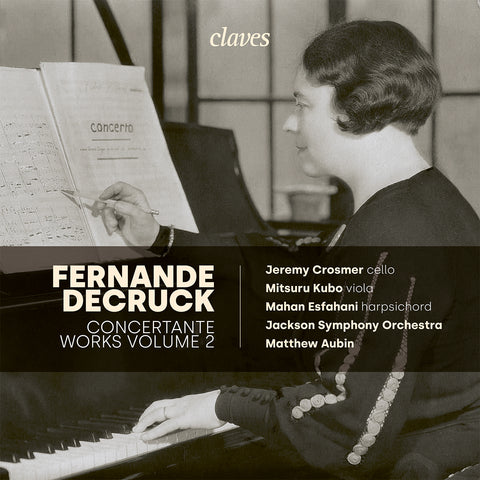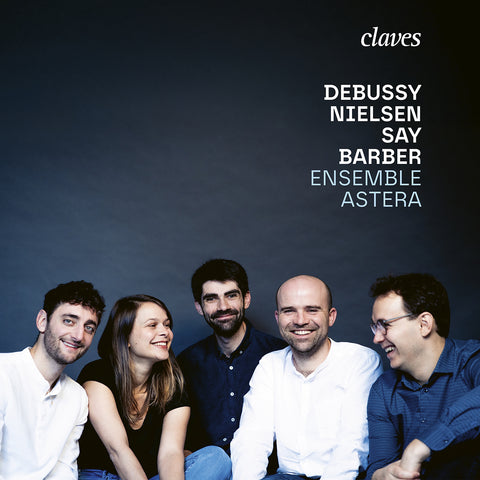(1989) Bläsermusik der Klassik
CD set: 1
Catalog N°:
CD 0611
Release: 1989
EAN/UPC: 7619931061122
- UPC: 829410479363
This album is now on repressing. Pre-order it at a special price now.
CHF 18.50
This album is no longer available on CD.
This album has not been released yet. Pre-order it from now.
CHF 18.50
This album is no longer available on CD.
This album is no longer available on CD.
VAT included for Switzerland & UE
Free shipping
This album is now on repressing. Pre-order it at a special price now.
CHF 18.50
This album is no longer available on CD.
This album has not been released yet.
Pre-order it at a special price now.
CHF 18.50
This album is no longer available on CD.
This album is no longer available on CD.
BLÄSERMUSIK DER KLASSIK
Franz Danzi (1763-1826) born in Mannheim, was held in high esteem by his contemporaries and especially by Carl Maria von Weber his junior by twenty-three years. Danzi is considered the forerunner of musical romanticism. The first work he presented to the public as a composer was his opera ‘Die Mitternachtsstunde’ (The Midnight Hour). In his works for chamber music extending from the Duo to the Sextet – the instruments are used in different even rare combinations. In his quintet for wind-instruments Opus 56 No. 1 the treatment of the different instruments is particularly charming in sound. The influence of Mozart gave him direction but his use of opera melodies is typical of the taste of his own time.
Carl Stamitz (1745-1801) grew up in Mannheim at the time when the ‘Mannheimer Hofkapelle” had its most brilliant period. He benefited by the teaching of his father but after the latter’s early death Cannabich, Ignaz Holzbauer and F. Xaver Richter became his teachers.
The musical language of his symphonic compositions and chamber music distinctly show the influence and style of the ‘Mannheimer Schule’. The single movements are fluently constructed without being light. His frequent use of the third and his many sustained notes give the movements a singing character.
His quartet in Eb major Opus 8/2 has three movements in accordance with the Italian custom. The minuet was – as often in solo concertos – omitted. The final movements usually have the Rondo form. Interesting combinations for oboe, clarinet, horn and bassoon which had sunk into oblivion since Dittersdorf’s time, were revived by Stamitz and taken up again by Mozart in his sinfonia concertante.
Anton Reicha born in 1770 in Prague and died in Paris in 1836, is one of the most interesting composers of Beethoven’s time. Famous composers such as Liszt, Gounod, Berlioz and Franck were his pupils. His style characterizes the transition from the Viennese classic to early romanticism (1803). His love for wind-instruments. Among other music he wrote twenty-four quintets for wind-instruments of which Opus 88 and 91 were written around 1810 while Reicha was staying in Paris as a teacher of the ’Ecole Royale de Musique’. By then his quintets for wind-instruments had established themselves in popularity – and with reason – as rich fantasy is combined with a masterly form of great virtuosity and a full utilization of the characteristic quality of the wind-instruments.
The ‘Residenz-Quintett München’ founded in 1969 is made up of first-class wind-players from Munich orchestras of high repute – the symphony and Bavarian radio-orchestra, the philharmonic orchestra and the orchestra of the Bavarian State opera. Today the ‘Residenz-Quintett’ is rated among the best known German wind-quintets, with a reputation extending far beyond the German border. In Czechoslovakia in 1975 this ensemble was given the ‘Janácek-medaillon’ for its excellent interpretation of contemporary Czech music.
(1989) Bläsermusik der Klassik - CD 0611
Franz Danzi (1763-1826) born in Mannheim, was held in high esteem by his contemporaries and especially by Carl Maria von Weber his junior by twenty-three years. Danzi is considered the forerunner of musical romanticism. The first work he presented to the public as a composer was his opera ‘Die Mitternachtsstunde’ (The Midnight Hour). In his works for chamber music extending from the Duo to the Sextet – the instruments are used in different even rare combinations. In his quintet for wind-instruments Opus 56 No. 1 the treatment of the different instruments is particularly charming in sound. The influence of Mozart gave him direction but his use of opera melodies is typical of the taste of his own time.
Carl Stamitz (1745-1801) grew up in Mannheim at the time when the ‘Mannheimer Hofkapelle” had its most brilliant period. He benefited by the teaching of his father but after the latter’s early death Cannabich, Ignaz Holzbauer and F. Xaver Richter became his teachers.
The musical language of his symphonic compositions and chamber music distinctly show the influence and style of the ‘Mannheimer Schule’. The single movements are fluently constructed without being light. His frequent use of the third and his many sustained notes give the movements a singing character.
His quartet in Eb major Opus 8/2 has three movements in accordance with the Italian custom. The minuet was – as often in solo concertos – omitted. The final movements usually have the Rondo form. Interesting combinations for oboe, clarinet, horn and bassoon which had sunk into oblivion since Dittersdorf’s time, were revived by Stamitz and taken up again by Mozart in his sinfonia concertante.
Anton Reicha born in 1770 in Prague and died in Paris in 1836, is one of the most interesting composers of Beethoven’s time. Famous composers such as Liszt, Gounod, Berlioz and Franck were his pupils. His style characterizes the transition from the Viennese classic to early romanticism (1803). His love for wind-instruments. Among other music he wrote twenty-four quintets for wind-instruments of which Opus 88 and 91 were written around 1810 while Reicha was staying in Paris as a teacher of the ’Ecole Royale de Musique’. By then his quintets for wind-instruments had established themselves in popularity – and with reason – as rich fantasy is combined with a masterly form of great virtuosity and a full utilization of the characteristic quality of the wind-instruments.
The ‘Residenz-Quintett München’ founded in 1969 is made up of first-class wind-players from Munich orchestras of high repute – the symphony and Bavarian radio-orchestra, the philharmonic orchestra and the orchestra of the Bavarian State opera. Today the ‘Residenz-Quintett’ is rated among the best known German wind-quintets, with a reputation extending far beyond the German border. In Czechoslovakia in 1975 this ensemble was given the ‘Janácek-medaillon’ for its excellent interpretation of contemporary Czech music.
Return to the album | Main Artist: Residenz-Quintet München






